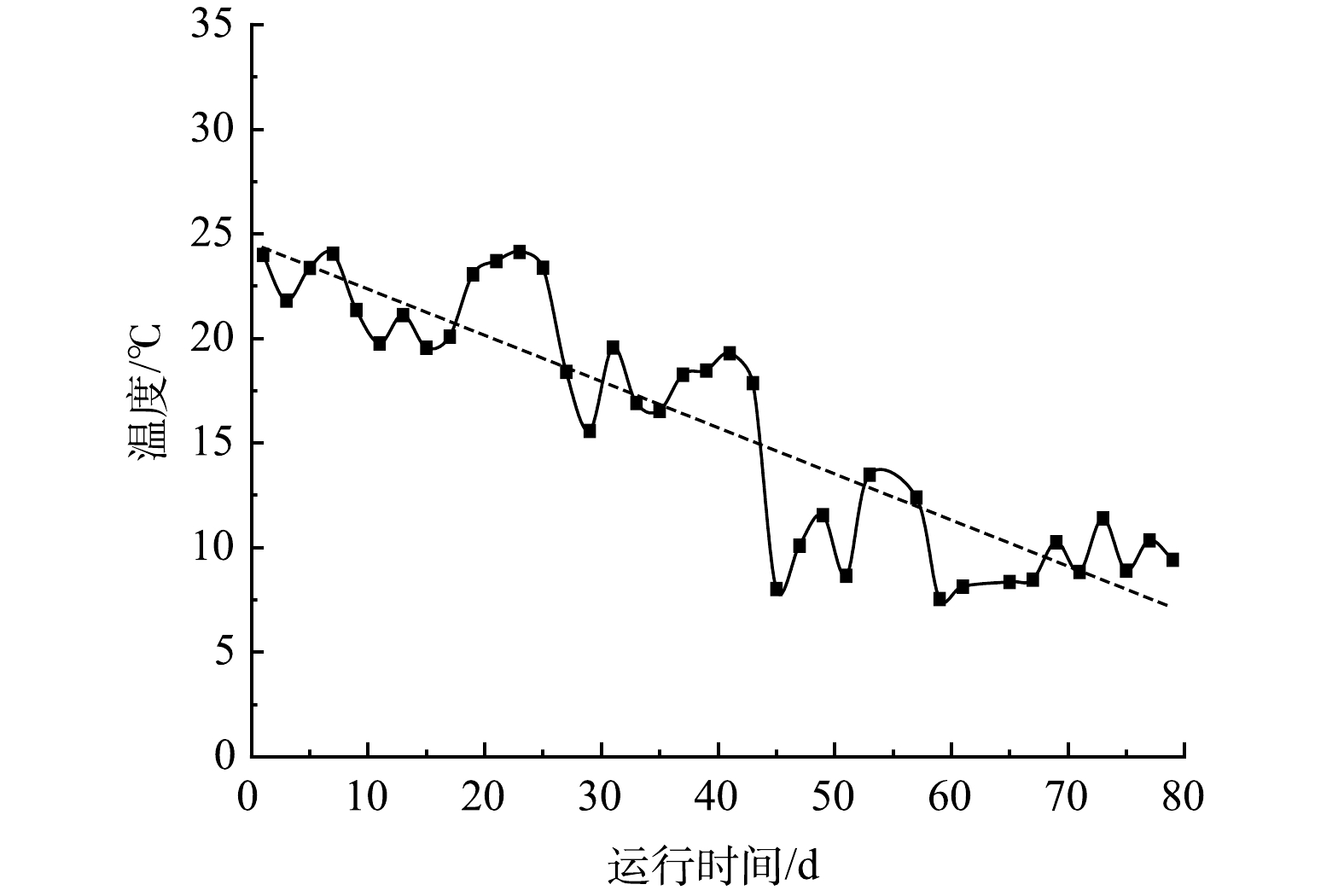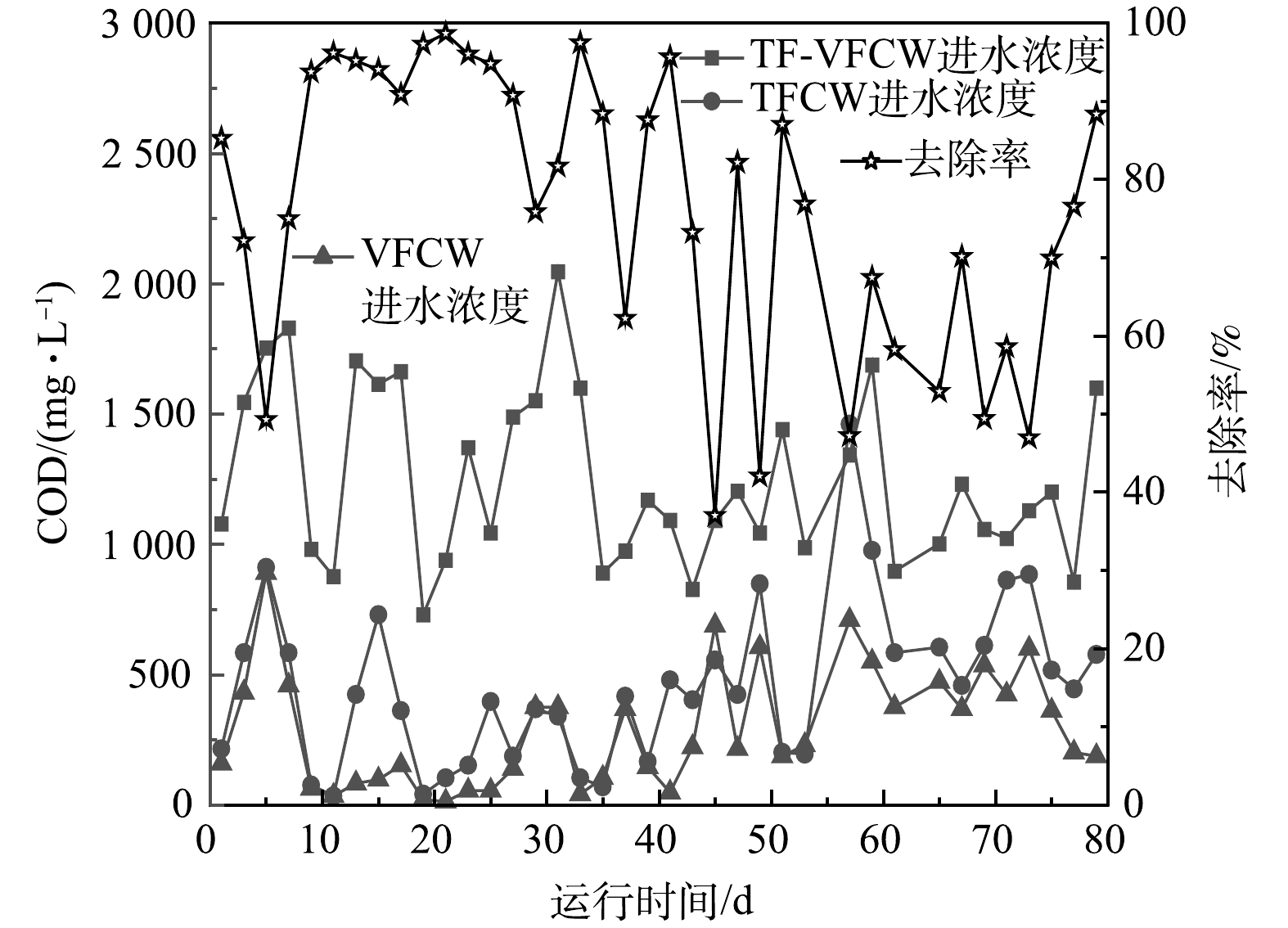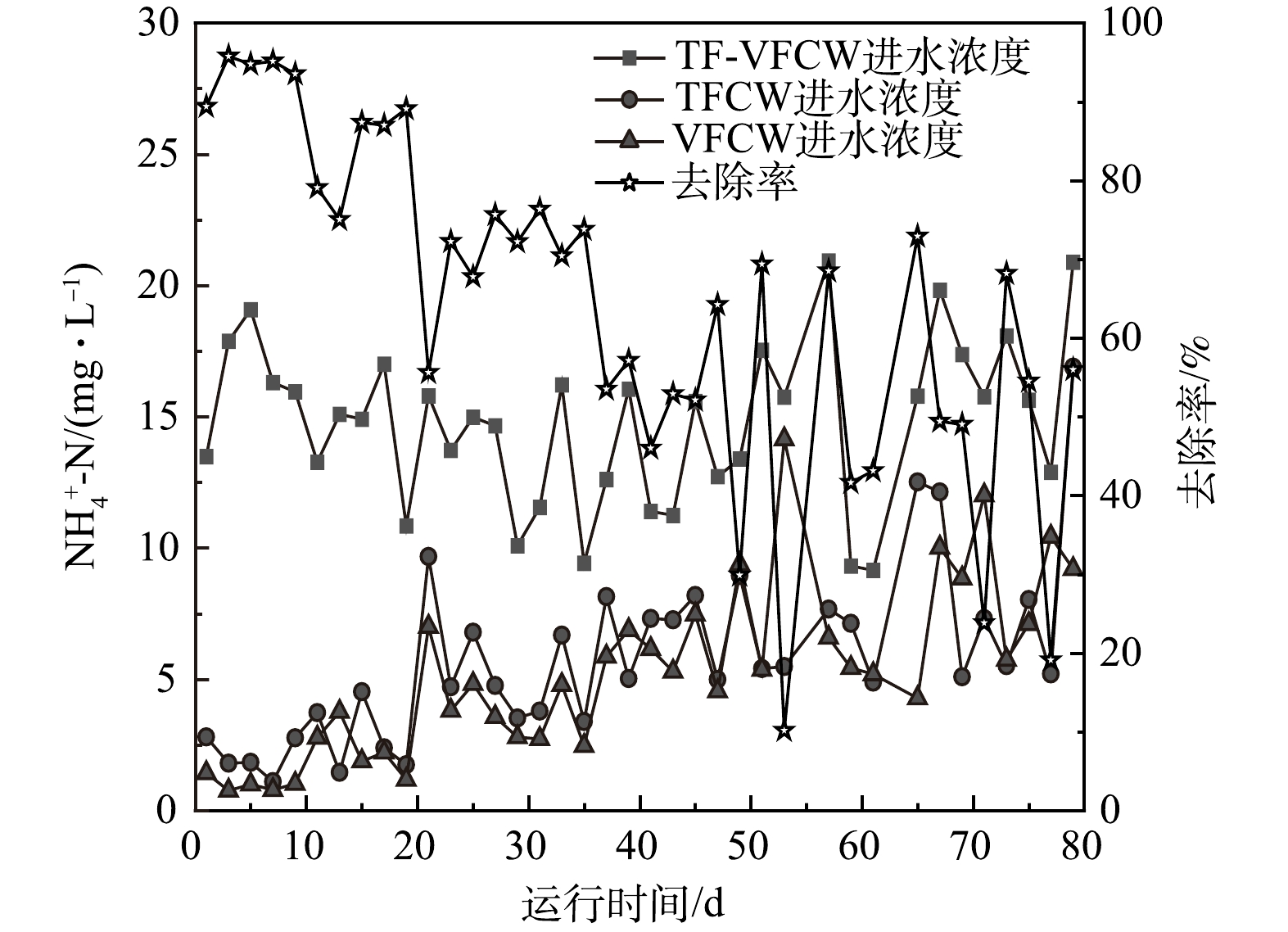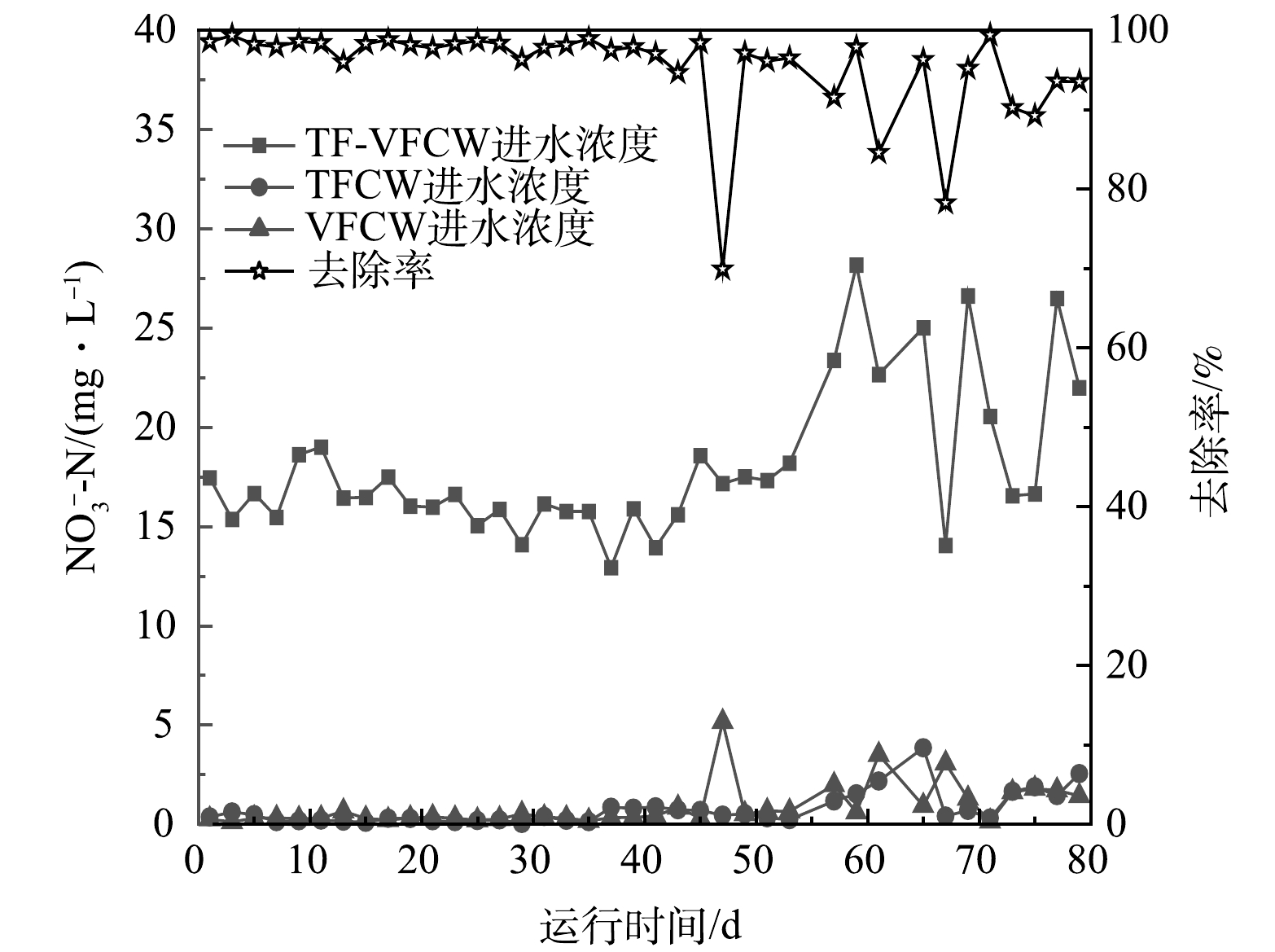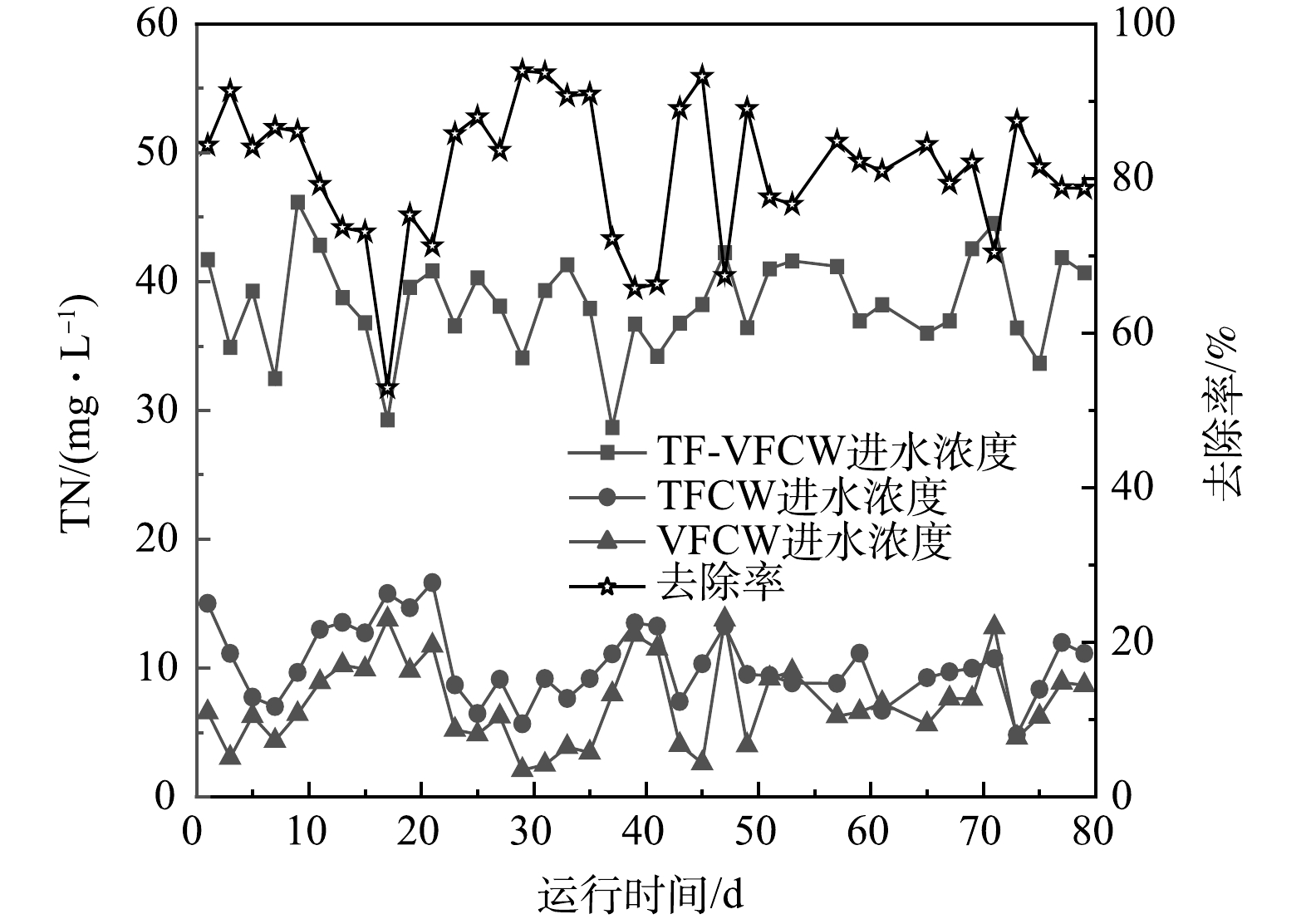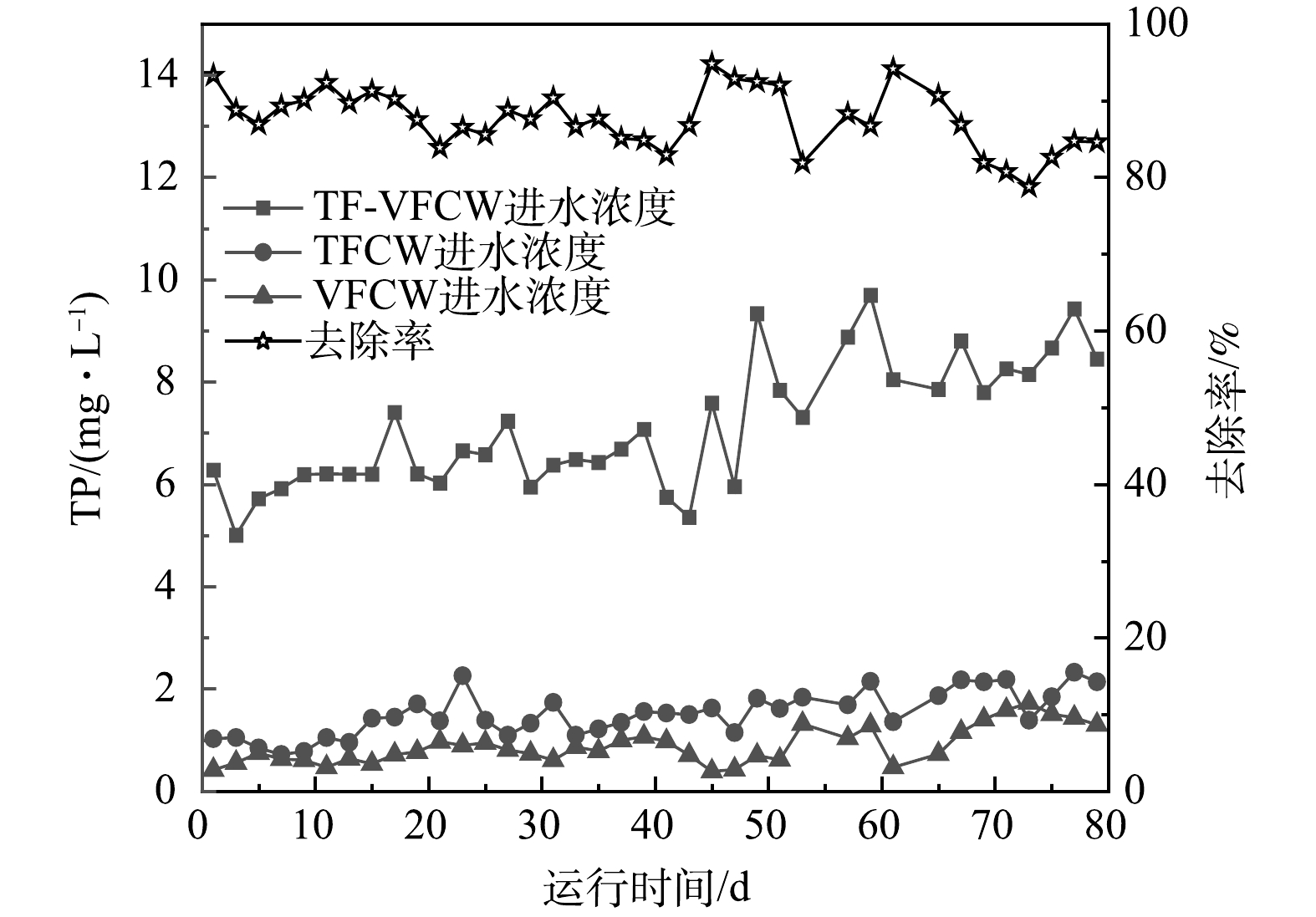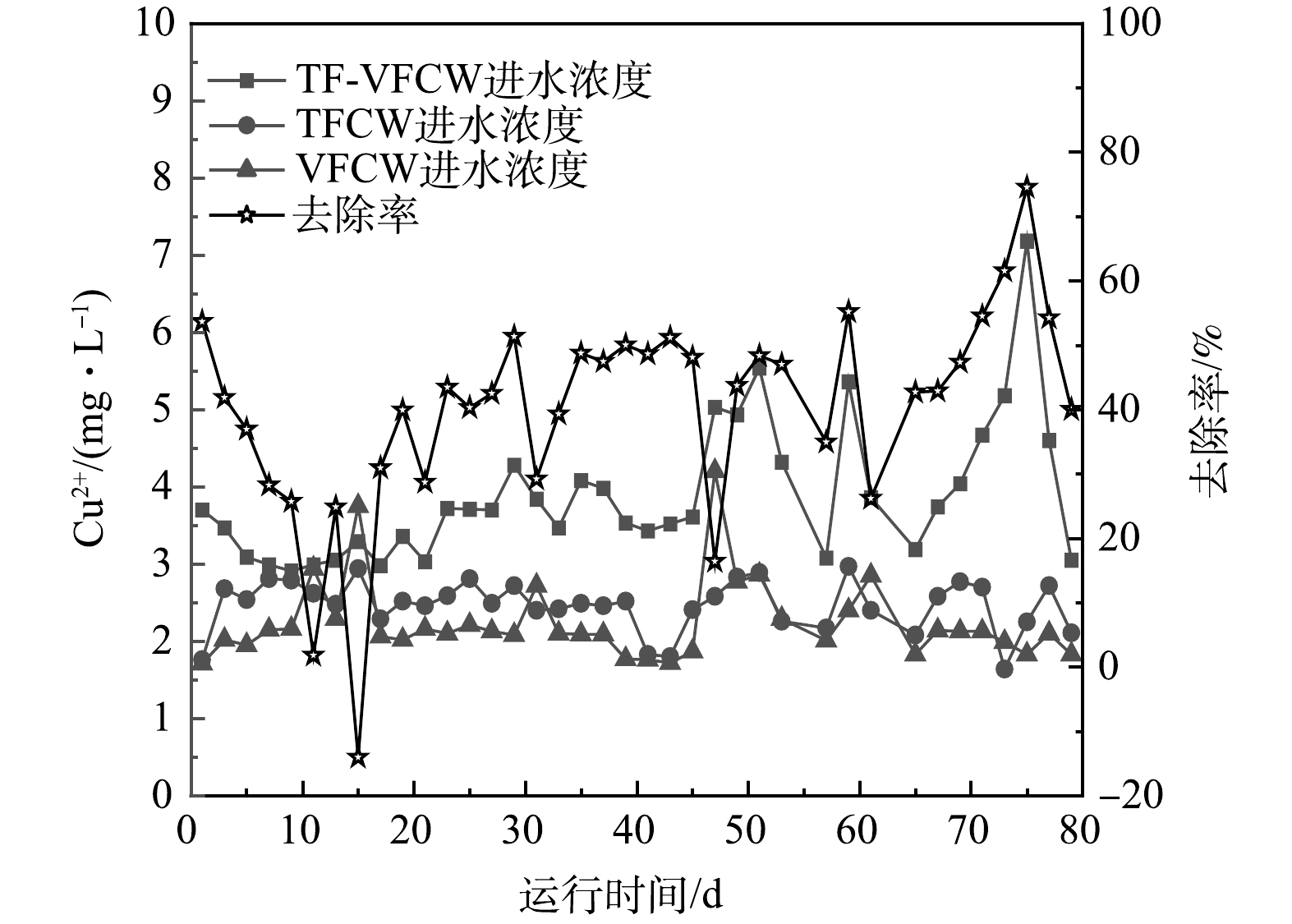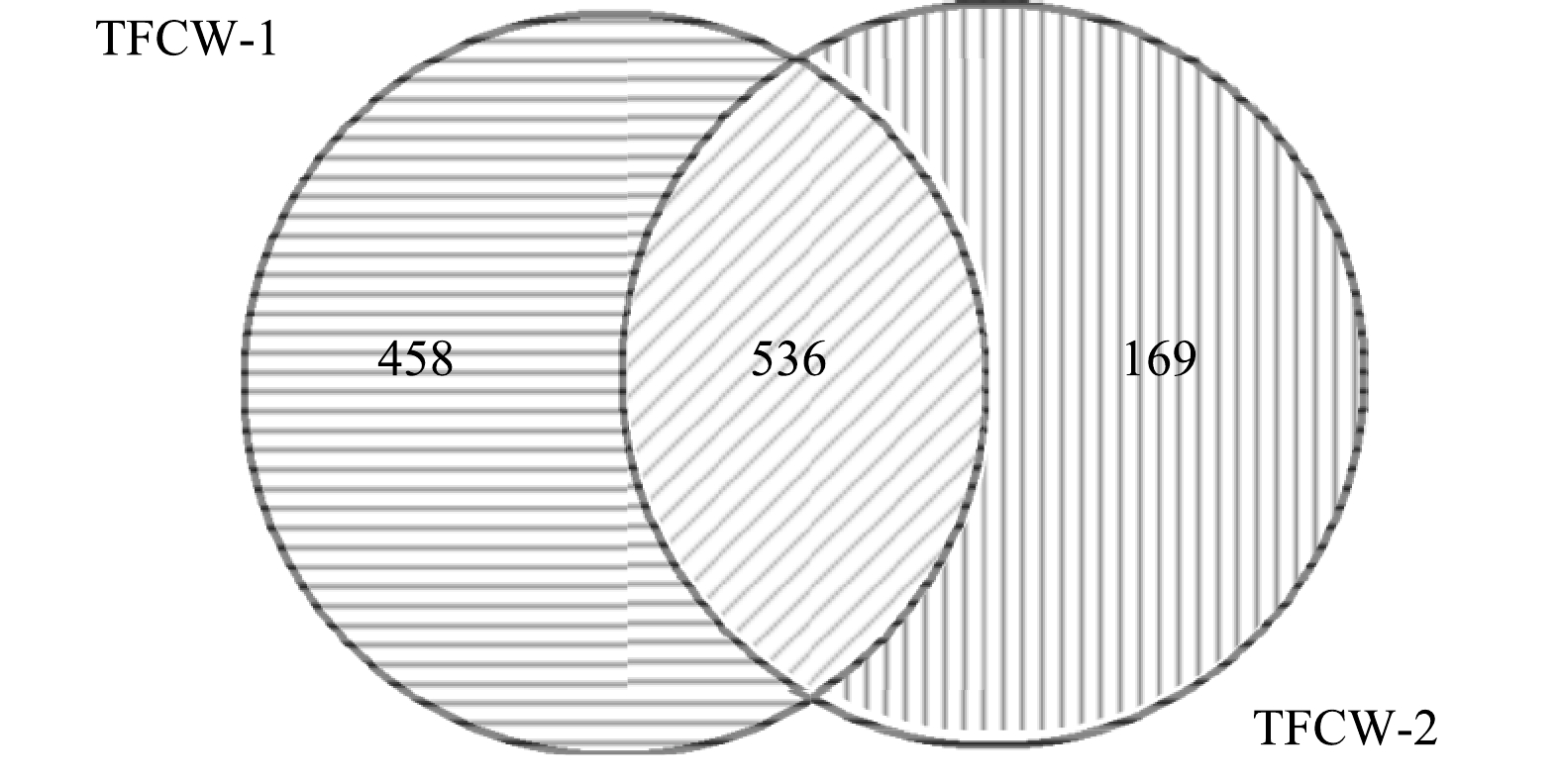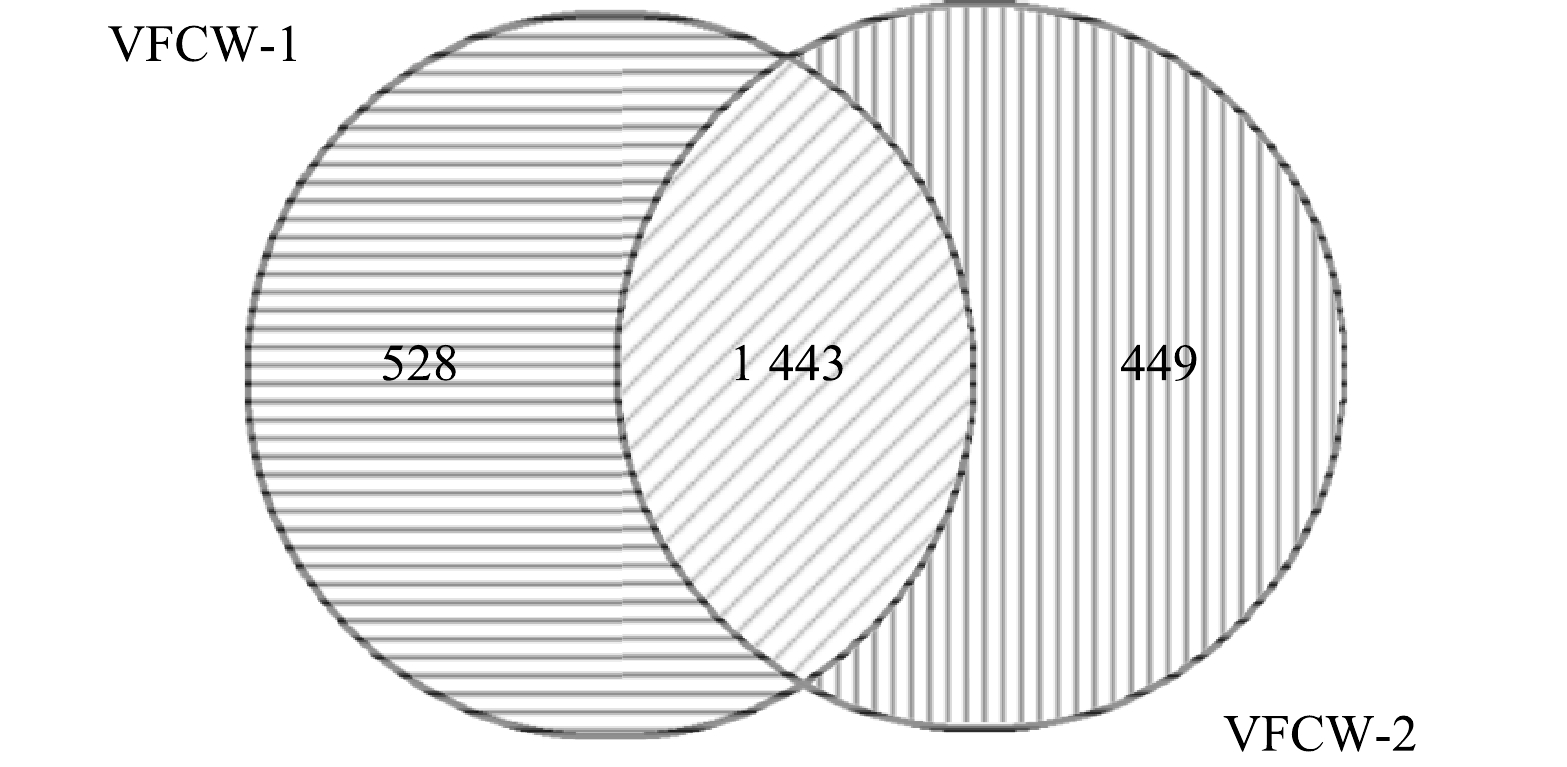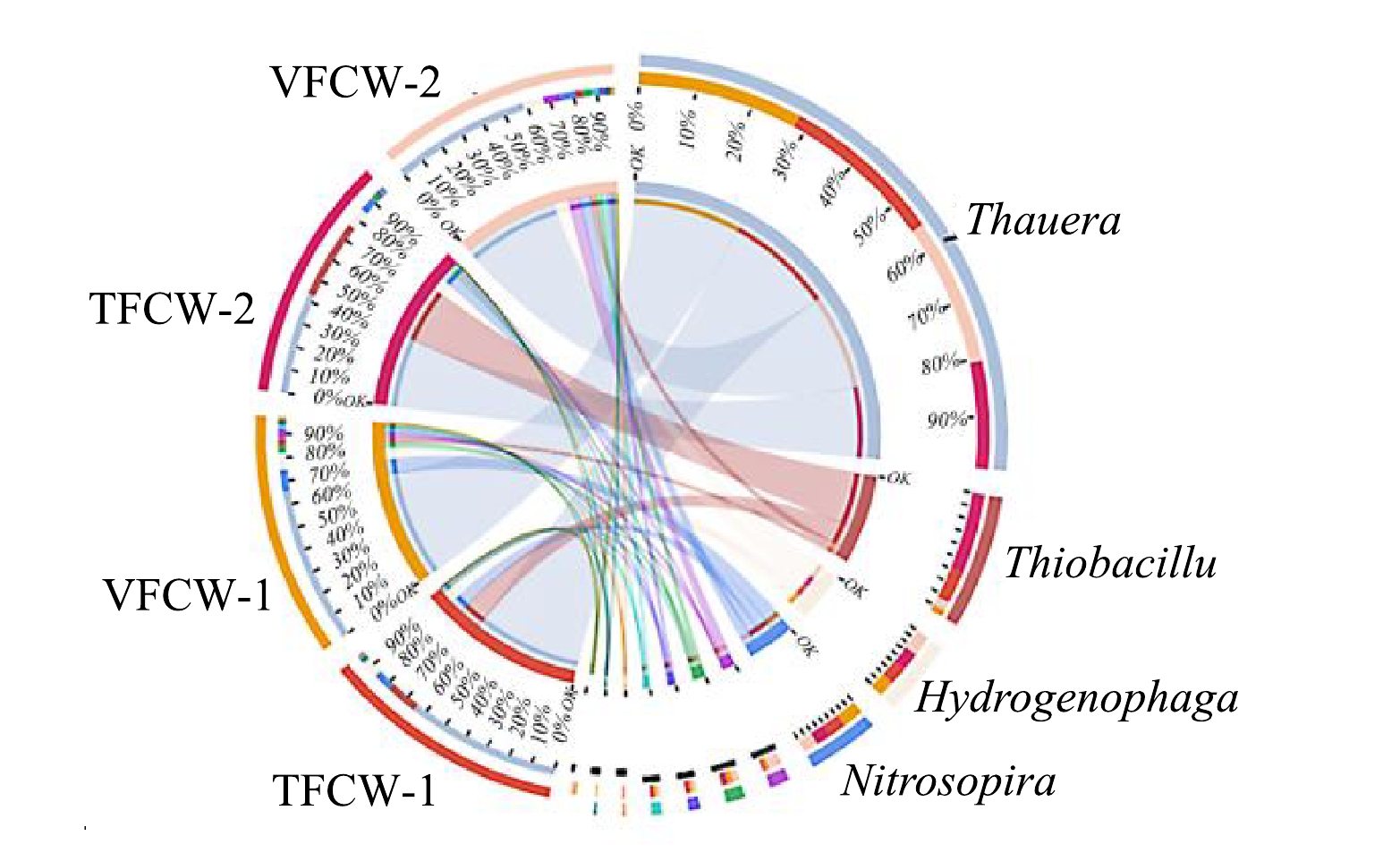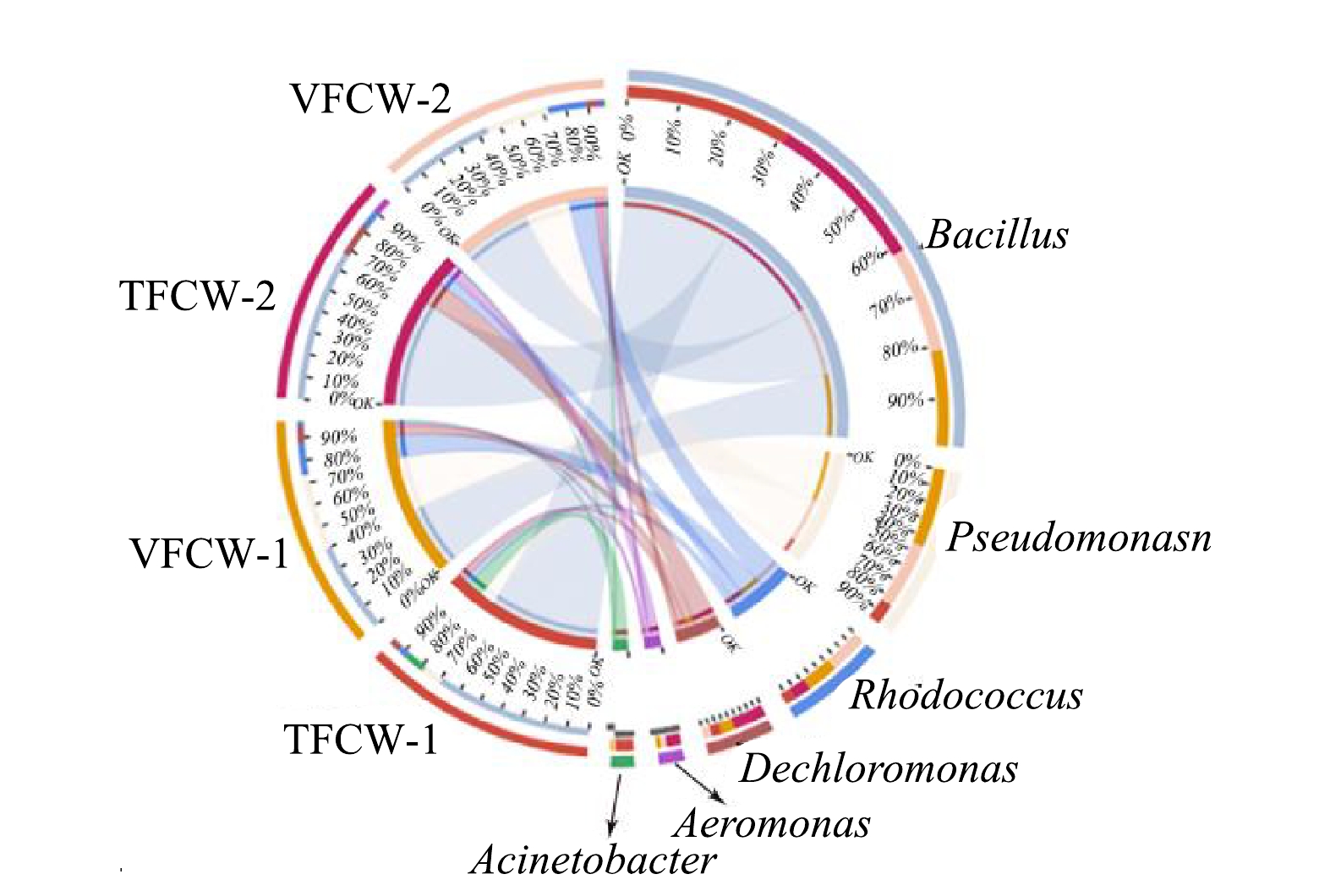-
随着城镇化进程加快,不透水地表的急剧增加导致了降雨径流污染风险增大[1],大量污染物(如氮、磷、重金属等)随着径流进入受纳水体,最终导致水质恶化[2]。有研究表明,屋顶径流为城市受纳水体贡献了5.35%的颗粒物,道路径流贡献了69.24%的颗粒物[3]。水体作为城市重要组成部分,在城市环境、美学和娱乐等方面而受到高度重视。为减少城市面源污染,实现城市高质量可持续发展,探索有效的污染控制措施是十分必要的。
源头治理是将城市雨水中污染物以及接收水体潜在负面影响降至最低的基本环节,被认为是处理低水平污染扩散成本最低的管理策略[4]。近年来,人工湿地(constructed wetland,CW)以净化效果好、运行成本低、景观效果明显等优势在径流源头控制中得到广泛的应用[5-7]。CW系统主要通过植物对营养物质的吸收、微生物的代谢、基质的吸附和通过各种形式的机械分离来达到降低的营养物质、有机物和悬浮物的目的[8]。其中微生物是CW中生态系统的分解者,包括细菌、真菌、原生动物等,其繁殖发育高度依赖于湿地的水生环境,同时微生物的生命活动也将会对系统环境产生影响[9]。微生物通过有机氮降解、硝化、反硝化方式在污染物转化中发挥着重要作用[10-11]。虽然CW系统去除污染物的机理研究已有大量报道,但复合流人工湿地中微生物群落随时间变化特征及其对氮、磷、重金属综合去除方面的研究较少。
在不同情境下,CW类型的选择存在很大差异。肖海文等[12]认为城市径流的净化以表面流人工湿地(surface flow wetland,FWS)应用为主,同时考虑增加潜流系统(vertical flow,VF)来增加高污染负荷的去除效果。然而,受场地面积限制的影响,FWS系统并不能得到广泛的推广。另外,随着人类活动的加剧,大气沉降、车辆运输和金属建筑围护结构等导致氮、磷、重金属、有机物等浓度的增加[13],传统的CW不能满足高负荷污染物的去除。潮汐流人工湿地(tidal flow constructed wetland,TFCW)是近几年兴起的流态改进型设计工艺,其采用进水-放空-闲置的进出水方式交替运行,将CW系统周期性进水和排空,即湿环境/干环境周期交替地间歇运行[14]。在运行过程中依靠床体饱和浸润面的变化产生吸力,将大气氧强迫吸入床体,提高了湿地床的氧传输量,对有机物和氨氮有较好的去除[14]。在实际应用中,可将不同类型人工湿地工艺组合,形成复合型人工湿地,从而提高CW系统在应对不同地区、季节、污染物类型的稳定性和适应性。
本研究采用潮汐流(TF)-垂直潜流(VF)复合人工湿地工艺(tidal flow-vertical flow constructed wetland,TF-VFCW),以砾石(gravel,GR)为填料基质,种植黄菖蒲(Iris pseudacorus L)为净水观赏植物,分析了该系统对城市雨水径流中污染物(COD、NH4+-N、NO3−-N、TN、TP、Cu2+)的去除效果,探究了湿地内部微生物群落变化以及对污染物去除效果的影响,为CW在城市径流中的推广应用提供科学参考。
-
CW模型位于山西农业大学太谷校区内,主体由聚氯乙烯箱组成,其中潮汐流人工湿地单元(TFCW)箱体的长、宽和高分别为75、55和60 cm;垂直潜流人工湿地单元(VFCW))箱体的长、宽和高分别为100、55和45 cm。整个CW装置由2个不同的单元串联组成,其中TFCW单元淹没期与闲置期交替运行,VFCW单元始终处于淹没期。2个湿地单元的进水方式均为下行式进水,出水排入周边绿地。模型的内部结构从下到上依次为:Ф25~50 mm大砾石;Ф8~16 mm砾石层;Ф2~5 mm小砾石层;种植土层。TF-VFCW系统各湿地单元最上部种植山西地区常见水生景观植物—黄菖蒲。人工湿地运行方式与湿地构造如图1所示。
CW各单元的运行参数为:TFCW单元水力停留时间6 h,排空比1:1,VFCW单元水力停留时间12 h。城市径流的水质和水量具有较大的不稳定性,本研究参考姚孟伟[15]、叶艾玲[16]、来雪慧[17]对太原市的城市径流水质检测情况,采用人工配水的方式来模拟城市径流。将45 g C6H12O6(葡萄糖)、10 g NH4Cl、6.5 g KNO3、1.8 g KH2PO4、0.76 g CuSO4·5H2O、0.76 g FeSO4、0.76 g CaCl2、0.76 g MgSO4加入到80 L水中。本研究人工配水的污染负荷较高,高污染的城市径流在降雨强度大、雨前干旱期较长、下垫面污染严重时出现,可以更好的验证人工湿地净水性能[18]。实验水质参数为:729.84~2 045.51 mg·L−1 COD、9.15~20.92 mg·L−1 NH4+–N、12.93~28.16 mg·L−1 NO3−-N、28.66~46.15 mg·L−1 TN、5.01~9.69 mg·L−1 TP、2.91~7.18 mg·L−1 Cu2+。2021年8月17日—2021年11月7日,对整个系统长期运行效果进行监测,实验天数为80 d。
-
本研究通过添加晋中市榆次污水处理厂二沉池的污水进行挂膜,微生物培养周期为2个月。出水达到稳定后,对出水水质进行长期运行监测。
-
水样包括实验进水和各湿地单元出水。采集水样后测定其化学指标,包括化学需氧量(COD),氨氮(NH4+-N),硝氮(NO3−-N),总氮(TN),总磷(TP),铜(Cu2+)。测定方法按照国家环境保护总局编著的《水和废水监测分析方法(第四版)》进行。
-
系统运行稳定后,每30 d对各单元30 cm深处基质样品进行采集,测定微生物含量。测序分析前,采用引物338F(5′-ACTCCTACGGGAGGCAGCAG-3′)和806R (5′-GGACTACHVGGGTWTCTAAT-3′)对提取的DNA进行PCR扩增,物种分类数据库为silva138/16s-bacteria,共完成4个样本的多样性数据分析,共获得优化平均序列长度419 bp。高通量测序服务由上海美吉生物平台提供。
-
实验数据使用Microsoft Excel 2010统计分析,使用Origin 2022软件进行实验数据图绘制。微生物数据图均在I-Sanger生物信息云(https://cloud.majorbio.com/)上分析。
-
1)环境温度分析。当TF-VFCW系统运行稳定后,对室外气温进行连续的监测,共持续80 d(图2)。最高日均温度出现在9月13日,为24.14 ℃;最低日均温度出现在10月17日,为7.54 ℃,总体呈下降趋势。在实验前期,日均温度基本保持稳定,第29天时日均温度发生第1次明显降温,第45天时发生第2次明显降温,第59天以后,基本保持稳定。
2)潮汐流-垂直潜流人工湿地系统对COD的去除效果。如图3所示,TF-VFCW系统进水中的COD为729.84~2 045.51 mg·L−1,平均值为1 251.30 mg·L−1;系统出水中的COD为12.84~889.95 mg·L−1,平均值为290.08 mg·L−1,去除率为36.98~98.63%,平均去除率为76.35%。TFCW单元COD出水为33.72~1 460.77 mg·L−1,平均去除率为62.92%;VFCW中COD平均去除率为33.05%。随着时间的推移,2个单元的COD去除率呈下降趋势。总体上,TFCW单元的COD平均去除率明显高于VFCW。
对于不溶性有机物,CW一般依靠植物的截留作用,截留下的不溶性物质被微生物分解。对于溶解性有机物,基质在吸附部分有机物的同时,也为植物和微生物对可溶有机物的降解提供载体、空间及反应界面[19]。在系统稳定运行的前30 d,TF-VFCW对COD起到很好的去除作用,此时湿地植物黄菖蒲也处于生长期,植物通过光合作用和吸收同化作用将污水中的小分子有机化合物转化为自身的生物量,从而降低污水中的COD[20]。随着时间的延长,系统对COD的去除率有一定程度的下降。一方面是因为气温下降,2个单元内的微生物活性降低;另一方面是因为微生物的代谢会使得生物膜发生脱落。
大多数微生物均能对有机物进行降解吸收,这些微生物广泛存在于人工湿地系统中。硝化菌是好氧自养菌,繁殖相对较慢,而降解有机物的异养菌在好氧条件下繁殖较快,在氧气竞争中处于优势。由于TFCW独特的“停留+排空”的运行模式,在淹没状态下将大量的有机物吸附在基质上,从而被反硝化菌和其他微生物利用,而在落干状态时有机物又主要被异养菌降解,这可能导致TFCW中COD去除率的升高。在VFCW进水中的COD值降低,可利用的碳源较低[21],缺乏碳源可能会限制异养反硝化的发生[22]。同时,VFCW中没有降解的有机物由于长时间处在淹没环境而释放,从而导致该单元COD的去除率较低。
3)潮汐流-垂直潜流人工湿地系统对NH4+-N去除效果。如图4所示,TF-VFCW进水中的NH4+-N质量浓度为9.15~20.92 mg·L−1,平均质量浓度为14.79 mg·L−1;出水中的NH4+-N质量浓度为0.76~14.15 mg·L−1,平均质量浓度为5.23 mg·L−1,NH4+-N去除率为10.16%~95.74%,平均去除率为63.99%。TFCW中NH4+-N出水质量浓度为1.10~16.89 mg·L−1,平均去除率为65.54%;VFCW中NH4+-N的平均去除率为17.78%。总体上,TFCW对NH4+-N的去除率明显高于VFCW。
CW对NH4+-N的去除主要通过硝化作用实现。有研究[23]表明,温度可影响微生物的酶促反应速率,而硝化反应的最适温度为20 ℃。实验开始于8月中旬,较高的室外温度可提升硝化功能菌的繁殖速度与生长活性,从而增加硝化反应的强度。同时,该时期植物处于生长期,旺盛的新陈代谢使得植物对氨氮的吸收量增大。同时,植物根际的微生物活性增强,提高了NH4+-N的去除率[24]。随着实验的运行,系统对NH4+-N的去除效果逐渐下降。其主要原因是当温度降至15 ℃以下时,硝化速率迅速下降,硝化反应在5 ℃时停止[25]。此外,有机物的好氧降解和NH4+-N去除所需的硝化细菌的生长和代谢降低,而降解有机物的异养细菌生长速度和活性均超过硝化细菌[26],这使得NH4+-N的去除效果下降。
4)潮汐流-垂直潜流人工湿地系统对NO3−-N去除效果。如图5所示,TF-VFCW进水中的NO3−-N质量浓度为12.93~28.16 mg·L−1,平均NO3−-N质量浓度为17.98 mg·L−1;出水中的NO3−-N质量浓度为0.11~5.16 mg·L−1,平均NO3−-N质量浓度为0.86 mg·L−1,NO3−-N去除率为69.90%~99.33%,平均去除率为95.27%。TFCW出水中NO3−-N质量浓度为0.03~3.85 mg·L−1,平均去除率为98.54%,但VFCW中NO3−-N不去除反而浸出,表现出VFCW的NO3−-N出水质量浓度高于VFCW的进水质量浓度。
硝酸盐是反硝化作用所需的底物[27],因此,NO3−-N质量浓度是影响CW系统反硝化强度的关键[28-29]。TF-VFCW对NO3−-N起到了很好的去除效果,反硝化细菌大多属兼性厌氧菌,对环境的适应性强。TFCW中好氧-厌氧交替环境和进水中充足的碳源为这类微生物的快速生长提供了条件,丰富的反硝化微生物群落对NO3−-N的去除起到了促进作用。而在VFCW进水中的NO3−-N质量浓度较低,不利于反硝化反应的进行,从而限制了CW对NO3−-N的进一步去除。并且长期的淹没环境会使得基质上的NO3−-N被释放,VFCW对NO3−-N的去除率较低。
5)潮汐流-垂直潜流人工湿地系统对TN去除效果。TF-VFCW对TN的去除效果如图6所示。TF-VFCW进水中的TN质量浓度为28.66~46.15 mg·L−1,平均TN质量浓度为38.28 mg·L−1,出水中的TN质量浓度为2.09~13.78 mg·L−1,平均质量浓度为7.29 mg·L−1,TN去除率为52.89~93.88%,平均去除率为80.83%。TFCW出水中TN质量浓度为4.82~16.63 mg·L−1,平均去除率为70.08%;VFCW单元的平均去除率为36.83%。TF-VFCW对TN的去除率在波动中呈下降趋势,TFCW对TN的去除效果明显高于VFCW。
一般认为,在CW系统中对氮的去除主要依赖于微生物的硝化/反硝化和植物吸收过程[30]。梁康等[31]的研究证明NH4+-N去除率对TN去除效果的影响更为显著。本研究中TN的去除趋势与NH4+-N相同。因此,TN的去除与微生物的活性密切相关。另外,在实验初期,刚种植的植物根系不发达,对于TF-VFCW内游离的有机氮吸附能力较差,降低了TF-VFCW对TN的去除效果。随着植物进入快速生长期,TN的去除率也逐渐上升。除上述影响因素外,在秋冬季节部分植物凋落物的分解可能会影响水体TN含量[32]。
6)潮汐流-垂直潜流人工湿地系统对TP去除效果。TF-VFCW对TP的去除效果如图7所示。TF-VFCW进水中的TP质量浓度为5.01~9.69 mg·L−1,平均质量浓度为7.11 mg·L−1,出水中TP质量浓度为0.39~1.72 mg·L−1,平均质量浓度为0.88 mg·L−1,TP去除率为78.79~94.80%,平均去除率为87.64%。TFCW出水中TP的质量浓度为0.72~2.33 mg·L−1,平均去除率为79.28%,VFCW中的平均去除率为42.67%。TF-VFCW中TP的去除效果相对稳定,TFCW对TP的去除率明显高于VFCW。
CW对磷的去除主要通过基质吸附和植物吸收[33]。TF-VFCW对TP的去除先保持稳定,然后呈现出小幅度的降低。主要原因是随着CW运行,基质对P的吸附趋于饱和,在后续的实验中,可以通过硝化作用的加速来增强硝化细菌对磷的需求,释放出更多的磷酸盐吸附位点,从而促进TP的去除率[34]。此外,在秋冬季节,随着气温降低,TF-VFCW中微生物活性与植物的生长下降,也可能是影响TP去除效果的因素。其次,VFCW长期处于厌氧的环境,聚磷菌在厌氧环境中会发生释磷现象[35]。
7)潮汐流-垂直潜流人工湿地系统对Cu2+的去除效果。TF-VFCW对Cu2+的去除效果如图8所示。TF-VFCW进水中的Cu2+质量浓度为2.91~7.18 mg·L−1,平均质量浓度为3.88 mg·L−1,出水中Cu2+质量浓度为1.71~4.21 mg·L−1,平均质量浓度为2.24 mg·L−1,Cu2+去除率为−14.02%~74.52%,平均去除率为40.22%。TFCW中出水质量浓度为1.64~2.97 mg·L−1,平均去除率为31.24%,VFCW单元的平均去除率为7.39%。总体上,TF-VFCW对Cu2+的去除率相对较低。
TF-VFCW对Cu2+的去除在波动中呈上升趋势,植物的吸收富集与基质的吸附沉淀是Cu2+的主要去除手段[36]。但有研究发现植物对重金属的去除效果并不明显,基质是重金属积累的主要场所[37]。本研究中铜的平均去除率较低,与GALLETTI等[38]对城市生活污水中Cu2+的去除效果较为类似。原因是CW中的铜主要以交换状态存在[39],具有较高浸出性。本研究随着实验时间的延长,可能导致了Cu2+的释放。VFCW单元对Cu2+的去除率要明显低于TFCW单元,其原因可能是VFCW中基质长期处于缺氧环境,所含溶解氧低、有机物含量高,导致底物的氧化还原电位降低[39]。
-
1)微生物多样性分析。采用高通量测序技术鉴定了各基质样品中的微生物群落。表1显示了在湿地系统运行稳定后,第30天的TFCW单元(TFCW-1)、VFCW单元(VFCW-1)和第60天的TFCW单元(TFCW-2)、VFCW单元(VFCW-2)中微生物群落多样性与丰富度。对TF-VFCW中微生物多样性进行分析。每个样品的覆盖率超过98%,表明测序结果具有代表性。
TF-VFCW中各单元的丰富度指数的排序为VFCW-1﹥VFCW-2﹥TFCW-1﹥TFCW-2。TF-VFCW中各单元的多样性指数的排序为VFCW-1﹥VFCW-2﹥TFCW-1﹥TFCW-2。随着时间的推移,TFCW和VFCW中微生物群落的多样性与丰富度均有所下降。当TF-VFCW运行稳定后的第60天时,TFCW单元的微生物的多样性呈现出较低的水平。TFCW单元好氧-厌氧的运行环境会逐渐筛选出优势种群,使得微生物的丰富度与多样性均下降。
2)微生物相似性分析。在相同取样时间下,TF-VFCW系统内各单元微生物共有和独有的OTU数量如图9所示。TFCW-1、VFCW-1的OTU数量分别为994个和1 971个,其中所共有的OTU数目为765个,分别占到两个样本的76.96%,38.81%。TFCW-2、VFCW-2的OTU数量分别为705个和1 892个,其中所共有的OTU数目为510个,分别占到2个样本的72.64%和26.96%。随着运行时间的推移,共有OTU数目变化较小。
不同取样时间下,TFCW单元与VFCW单元微生物共有和独有的OTU数量如图10和图11所示。TFCW-1与TFCW-2所共有的OTU数目为536个,分别占2个样本的53.92%和76.02%;VFCW-1与VFCW-2所共有的OTU数目为1 443个,分别占2个样本的73.21%和76.26%。湿地所选用的运行方式相同时会导致微生物群落的相似性高。
3)潮汐流-垂直潜流人工湿地系统微生物组成差异分析。TF-VFCW中的微生物在门(Phylum)和纲(Class)水平上的分类组成如图12和图13所示。门水平上,Firmicutes(厚壁菌门)、Proteobacteria(变形菌门)、Bacteroidota(拟杆菌门)、Actinobacteriota(放线菌门)、Chloroflexi(绿弯菌门)是TF-VFCW中丰度最高的微生物;纲水平上,Bacilli(芽孢杆菌纲)、Gammaproteobacteria(γ-变形菌纲)、Bacteroidia(拟杆菌纲)、Alphaproteobacteria(α-变形菌纲)、Actinobacteria(放线菌纲)、Clostridia(梭菌纲)是各单元丰度最高的微生物。
在本研究中,TFCW单元中的厚壁菌丰度从1.67%(30 d)上升到36.65%(60 d),VFCW单元中从3.47%上升到10.43%。温度越低厚壁菌门的丰度越高,这与宋兆齐等[40]研究中得到的温度越低厚壁菌门群落多样性越丰富的结论相类似。厚壁菌门在无氧条件下会进行厌氧消化反应[41],而芽孢杆菌纲与梭菌纲均属于厚壁菌门。从纲水平上分析发现,梭菌纲作为常见厌氧菌,在TFCW单元中并未检测到,VFCW单元中从1.22%上升到3.62%。有研究[42]表明,厚壁菌门是各种有机物降解过程中的主要微生物,并且厚壁菌门中的微生物能够适应低温环境,在温度降低时厚壁菌门丰度显著上升,从而保持着TF-VFCW系统对污染物中的有机物的去除效果。
变形菌门是自然界广泛分布的一类微生物,是CW中脱氮除磷的优势菌门,它包括亚硝化细菌、硝化细菌和反硝化类的细菌。根据PELISSARI等[11]的研究,大多数反硝化菌(包括自养菌和异养菌)来自变形菌门。在本研究中,α-变形菌纲与γ-变形菌纲是CW中常见的两类变形菌,可以利用CW内的有机物、氮、磷等进行繁殖。KARELOVA等[41]和LI等[43]发现γ–变形菌在去除NO3−-N和NO2−-N方面具有重要作用,并且随着实验的进行其丰度逐渐上升,也解释了TF-VFCW中NO3−-N去除率较高的原因。在TF-VFCW中,TFCW单元中的变形菌门丰度从10.81%上升到12.20%,VFCW单元中从32.07%上升到33.98%。2个单元的变形菌丰度均小幅度上升,说明TF-VFCW的微生物群落相对稳定,对总氮的去除效果有所提升。
拟杆菌门多为异氧菌,其门类下的微生物可以通过降解COD获得能量[40]。在TF-VFCW中,TFCW单元中的拟杆菌丰度从1.70%下降到1.58%,VFCW单元中从4.92%下降到3.55%。TF-VFCW对有机物去除起关键作用的优势菌群数量减少,这解释了系统各单元对COD的去除效果下降原因。在两次取样中,随着温度的下降,拟杆菌门的相对丰度也随之下降,这与侯素霞等[44]研究中拟杆菌门的相对丰度与温度变化成正比的结果相类似;但与ZHAO等[45]和XIA等[23]的研究拟杆菌门的种群数量随着温度的降低而呈上升趋势的结果有所出入。
放线菌门的大量属类存在于同步脱氮除磷的CW中[46]。在本研究中,TFCW单元中的放线菌门丰度从34.68%下降到30.62%,VFCW单元中从14.56%下上升到19.43%。当运行的方式不相同时,同种微生物对生存环境适应的能力也不同,但总体上砾石基质在不同温度条件下均有较高丰度的放线菌。
绿弯菌门属于产氧光合细菌,能通过有氧呼吸与厌氧呼吸来进行能量代谢,主要参与硝化作用中NO2−-N的氧化[47]。在本研究中,TFCW单元中的绿弯菌门丰度从4.99%下降到2.76%,VFCW单元中绿弯菌门丰度从10.4%下降到7.70%。随着时间的推移,绿弯菌门的丰度逐渐下降,硝化反应的强度不断减弱,这一趋势与CW对NH4+-N的去除率的变化趋势一致。
-
CW内部的微生物分布十分复杂,不同的取样时间会对功能微生物群落结构产生很大的影响。通过探究功能微生物群落可以了解微生物生存环境,从而提高CW的运行效果。本研究将各样品中丰度排名前50的微生物群落在属水平上组成进行进一步的分析(图14)。在TF-VFCW中,反硝化菌主要包括Pseudomonasn(假单胞菌属)、Thauera(索氏菌属)、Zoogloea(动胶杆菌)、Hyphomicrobium(噬氢菌属)等;硝化细菌主要包括Nitrospira(硝化螺旋菌属)、Nitrosomonas(亚硝化单胞菌属)和Nitrosospira(亚硝化螺菌属)等;聚磷菌主要包括Acinetobacter(不动杆菌属)、Aeromonas(气单胞菌属)等;聚糖菌主要包括Defluviicoccus。
有研究[48-50]表明,Achromobacter(无色杆菌属)、Acinetobacter(不动杆菌属)、Thiobacillus(硫杆菌属)和Thauera(索氏菌属)等参与氮的转化。Nitrosomonas(亚硝化单胞菌属)和Nitrosospira(亚硝化螺菌属)具有氨氧化功能[51]。Hydrogenophaga(噬氢菌属)、Pseudomonas(假单胞菌属)、Thermomonas(热单胞菌属)、Bacillus(芽孢杆菌)具有反硝化作用[52]。在本研究中,筛选出了Thauera(索氏菌属)、Thiobacillus(硫杆菌属)、Hydrogenophaga(噬氢菌属)、Nitrosospira(亚硝化螺菌属)这4类常见的除氮微生物(图15)。
在本研究中,可以筛选出Pseudomonas(假单胞菌属)[53]、Dechloromonas(脱氯菌属)[53]、Acinetobacter(不动杆菌属)[54-55]、Bacillus(芽孢杆菌)[55]、Aeromonas(气单胞菌属)[55-56]、Rhodococcus(红球菌属)[57]等常见除磷功能微生物(图16)。
有研究表明,当温度低于20°C时,硝化和反硝化速率等微生物活性受到抑制[23]。由图2所知,TF-VFCW运行稳定后的30 d内,平均气温高于20 ℃;在第30天后,气温经历大幅度的降低。在TF-VFCW中,2个单元的优势菌种均为索氏菌属。随着温度的下降,其他除氮微生物的丰度略有上升,但索氏菌属的丰度下降,这可能是导致实验第30天后NO3−-N和TN的去除率下降的原因。其次,运行方式的差异会使得功能菌的丰度有所不同,如在TF-VFCW中的亚硝化螺菌属,这类微生物为专性好氧菌,具有去除NH4+-N的功能[58]。TFCW单元的好氧-厌氧环境为其提供了良好的生存环境,从而提高了系统对NH4+-N和TN的去除效果,这也解释了TFCW单元对NH4+-N的去除效果优于VFCW单元的原因。另外,在CW中发现的硫基自养反硝化菌—硫杆菌[59],其能够利用硫化物作为电子供体完成硝酸盐的还原。
随着温度的下降,TF-VFCW中的除磷功能微生物假单胞菌属和不动杆菌属的丰度均降低;红球菌属和气单胞菌属均有小幅度的上升;而芽孢杆菌的丰度则在TFCW单元中降低,在VFCW单元中升高。在TF-VFCW中的优势菌种是芽孢杆菌。芽孢杆菌属于好氧或兼性厌氧型微生物,可以通过亚硝化和反硝化作用除磷[60]。而假单胞菌属、气单胞菌属的微生物具有较强的聚磷能力[61],能吸收废水中的磷酸盐,并将磷酸盐以多聚磷酸盐的形式存储在细胞内,但聚磷菌在厌氧条件下释放磷,这导致了VFCW单元除磷效果低于TFCW单元。此外,COD值在微生物反硝化除磷过程中也起到了重要的作用,VFCW单元较低的COD值不能充分供给微生物在缺氧时对磷的吸收,反硝化除磷效率将下降[62]。然而,大量的研究表明CW对磷的去除主要通过基质吸附和植物吸收,微生物的作用并不显著[63-64]。
-
1) COD、NH4+-N、TN的去除率随温度的降低而逐渐降低,平均去除率分别为62.92%、65.54%、80.83%,对NO3−-N的去除率先保持稳定后在波动中下降,平均去除率为95.27%,对TP的去除先保持稳定后期略有降低,平均去除率为87.64%,对Cu2+的去除在波动中呈上升趋势但总体去除率不高,平均去除率为40.22%。TFCW单元对于各污染物的去除效果显著优于VFCW单元。
2)在TF-VFCW系统中,门水平上各单元丰度最高的几类微生物包括Firmicutes(厚壁菌门)、Proteobacteria(变形菌门)、Bacteroidota(拟杆菌门)、Actinobacteriota(放线菌门)和Chloroflexi(绿弯菌门)。随着时间的推移和温度的降低,TFCW单元的在门水平上的优势菌种发生了明显的改变,由Proteobacteria(变形菌门)变为Firmicutes(厚壁菌门),提升了CW系统对NO3−-N的去除效果;2个系统中的TFCW单元和VFCW单元之间共有OTU数目均有所减少,不同湿地单元之间较低的微生物群落相似度有助于整个湿地系统具有较为全面的水质净化能力。
3)在属水平上,系统中主要的除氮微生物为Thauera(索氏菌属)、Thiobacillus(硫杆菌属)、Hydrogenophaga(噬氢菌属)、Nitrosospira(亚硝化螺菌属);主要的除磷微生物为Pseudomonas(假单胞菌属)、Dechloromonas(脱氯菌属)、Bacillus(芽孢杆菌)、Acinetobacter(不动杆菌属)、Rhodococcus(红球菌属)、Aeromonas(气单胞菌属)。TFCW中脱氮除磷功能微生物的多样性和功能微生物要明显优于VFCW,这也解释了TFCW单元比VFCW单元污染物去除率高的事实。温度的变化会影响TF-VFCW中除氮、除磷功能微生物的多样性和群落结构,而温度对除磷效果的影响明显小于除氮效果。CW除磷的主要机理是基质吸附和植物吸收,生物除磷的占比较小。
潮汐流-垂直潜流人工湿地对城市径流污染物净化效果
Removal of pollutants from urban runoff by tidal flow-vertical flow constructed wetland
-
摘要: 人工湿地(CW)在城市径流污染源头控制中发挥重要的作用。采用潮汐流(TFCW)-垂直潜流(VFCW)串联的复合人工湿地工艺(TF-VFCW),以砾石为填料构建人工湿地模型,探究TF-VFCW长期运行下CODcr、NH4+-N、NO3−-N、TN和Cu2+的去除效果以及微生物群落变化对污染物去除效果的影响。结果表明:在80 d的运行中,TF-VFCW对COD、NH4+-N、TN的去除效率逐渐下降,平均去除率分别为62.92%、65.54%、80.83%;系统对NO3−-N的去除率先保持稳定,随后在波动中略有下降,平均去除率为95.27%;对TP的去除效果相对较为稳定,平均去除率为87.64%;对Cu2+的去除率虽有较大波动但总体上呈现上升的趋势,平均去除率为40.22%。TFCW单元的去污能力明显优于VFCW单元。随着时间的推移,TFCW单元在门水平上的优势菌种由Proteobacteria(变形菌门)变为Firmicutes(厚壁菌门);在属水平上,TF-VFCW中主要除氮微生物为Thauera(索氏菌属)、Thiobacillus(硫杆菌属)、Hydrogenophaga(噬氢菌属)、Nitrosospira(亚硝化螺菌属),主要除磷微生物为Pseudomonas(假单胞菌属)、Dechloromonas(脱氯菌属)、Bacillus(芽孢杆菌)等。TFCW的除氮、除磷功能微生物的多样性要明显优于VFCW。温度对除氮、除磷功能微生物的多样性和群落结构影响较大,NH4+-N、NO3−-N、 TN的去除效果明显受到温度的影响,而磷的去除受温度影响较小,其主要通过基质吸附和植物吸收。
-
关键词:
- 潮汐流-垂直潜流人工湿地 /
- 径流污染 /
- 微生物群落 /
- 温度
Abstract: Constructed wetland (CW) plays an important role in the source control of urban runoff pollution. A CW model (TF-VFCW) was constructed by using tidal flow (TFCW) - vertical flow (VFCW) with gravel as filler to explore the removal efficiency of CODcr, NH4+-N, NO3−-N, TN and Cu2+ under long-term operation. Then, the impact of microbial community changes on pollutant removal was discussed. The results showed that: (1) During the 80-day operation, the removal efficiency of CODcr, NH4+-N and TN by TF-VFCW decreased gradually, and the average removal rates were 62.92%, 65.54% and 80.83%, respectively. The removal rate of NO3−-N in the system remained stable at first, then decreased slightly with the fluctuation, the average removal rate was 95.27%, and the average removal rate of TP was relatively stable with an average removal rate of 87.64%. Although the removal rate of Cu2+ fluctuated greatly, it showed an upward trend on the whole, with an average removal rate of 40.22%. The decontamination ability of TFCW unit was obviously better than that of VFCW unit. (2) With the extension of time, the dominant bacteria of TFCW unit at the phylum level changed from Proteobacteria to Firmicutes; at the genus level, the main nitrogen removal microorganisms in TF-VFCW were Thauera, Thiobacillus, Hydrogenophaga, Nitrosospira. The main phosphorus removal microorganisms included Pseudomonas, Dechloromonas, Bacillus, etc. (3) The diversity of functional microorganisms for nitrogen and phosphorus removal of TFCW was significantly better than that of VFCW. Temperature had a great influence on the diversity and community structure of functional microorganisms for nitrogen and phosphorus removal. The removal efficiency of NH4+-N, NO3−-N and TN was obviously affected by temperature, while the removal of phosphorus was less affected by temperature, which was achieved mainly through substrate and plant absorption. -

-
表 1 人工湿地系统在不同时间下的微生物多样性和丰富度
Table 1. Microbial diversity and richness in constructed wetland system at different times
样本名称 丰富度指数 多样性指数 覆盖率/% Sobs Ace Chao Shannon Simpson TFCW-1 994 1 799.75 1 528.55 3.30 0.12 99.4 VFCW-1 1 971 2 312.61 2 325.41 5.72 0.01 98.9 TFCW-2 705 1 283.75 1 064.84 2.94 0.16 99.4 VFCW-2 1 892 2 195.94 2 147.99 5.71 0.01 98.9 -
[1] HU D, ZHANG C, MA B, et al. The characteristics of rainfall runoff pollution and its driving factors in Northwest semiarid region of China-A case study of Xi'an[J]. Science of the Total Environment, 2020, 726: 138384. doi: 10.1016/j.scitotenv.2020.138384 [2] LIU A, MUMMULLAGE S, MA Y. K, et al. Linking source characterization and human health risk assessment of metals to rainfall characteristics[J]. Environmental Pollution, 2018, 238: 866-873. doi: 10.1016/j.envpol.2018.03.077 [3] MA Y K, HAO S N, ZHAO H T, et al. Pollutant transport analysis and source apportionment of the entire non-point source pollution process in separate sewer systems[J]. Chemosphere, 2018, 211: 557-565. doi: 10.1016/j.chemosphere.2018.07.184 [4] 曾思育, 董欣. 城市降雨径流污染控制技术的发展与实践[J]. 给水排水, 2015, 51(10): 1-3. doi: 10.3969/j.issn.1002-8471.2015.10.002 [5] 刘学欣, 李珂, 陈学平, 等. 模拟生态种植槽对雨水径流的净化[J]. 环境工程学报, 2015, 9(6): 2682-2684. doi: 10.12030/j.cjee.20150623 [6] 张智涌, 双学珍, 刘栋. 人工湿地对城市降雨径流污染物的削减效应[J]. 江苏农业科学, 2017, 45(15): 259-263. doi: 10.15889/j.issn.1002-1302.2017.15.066 [7] 李娟, 张伟, 桑敏, 等. 生物滞留设施对雨水径流氮磷污染物净化机理和运行优化方式研究进展[J]. 环境工程, 2020, 38(4): 77-82. doi: 10.13205/j.hjgc.202004014 [8] NGUYEN X C, CHANG S W, NGUYEN T L, et al. A hybrid constructed wetland for organic-material and nutrient removal from sewage: process performance and multi-kinetic models[J]. Journal of Environmental Management, 2018, 222: 378-384. [9] 尹楚杰, 吕源财, 潘文斌. 人工湿地填料在废水中脱氮除磷的应用研究进展[J]. 现代化工, 2021, 41(7): 68-71. doi: 10.16606/j.cnki.issn0253-4320.2021.07.014 [10] LV T, CARVALHO P N, ZHANG L, et al. Functionality of microbial communities in constructed wetlands used for pesticide remediation: Influence of system design and sampling strategy[J]. Water Research, 2017, 110: 241-251. doi: 10.1016/j.watres.2016.12.021 [11] PELISSARI C, GUIVEMAU M, VI As M, et al. Effects of partially saturated conditions on the metabolically active microbiome and on nitrogen removal in vertical subsurface flow constructed wetlands[J]. Water Research, 2018, 141: 185-195. doi: 10.1016/j.watres.2018.05.002 [12] 肖海文, 刘馨瞳, 翟俊, 等. 人工湿地类型的选择及案例分析[J]. 中国给水排水, 2021, 37(22): 11-17. doi: 10.19853/j.zgjsps.1000-4602.2021.22.002 [13] MüLLER A, ÖSTERLUND H, MARSALEK J, et al. The pollution conveyed by urban runoff: A review of sources[J]. Science of the Total Environment, 2020, 709: 136125. doi: 10.1016/j.scitotenv.2019.136125 [14] HU Y S, ZHAO Y Q, ZHAO X H, et al. Comprehensive analysis of step-feeding strategy to enhance biological nitrogen removal in alum sludge-based tidal flow constructed wetlands[J]. Bioresource Technology, 2012, 111: 27-35. doi: 10.1016/j.biortech.2012.01.165 [15] 姚孟伟. 太原市大气降水化学特征及来源分析[D]. 太原: 太原科技大学, 2014. [16] 叶艾玲, 程明超, 张璐, 等. 太原市夏季降水中溶解态重金属特征及来源[J]. 环境科学, 2018, 39(7): 3075-3081. doi: 10.13227/j.hjkx.201710075 [17] 来雪慧, 赵金安, 李丹, 等. 太原市工业区不同下垫面降雨径流污染特征[J]. 水土保持通报, 2015, 35(6): 97-100. doi: 10.13961/j.cnki.stbctb.20151209.001 [18] LUCKE T, NICHOLS P W B. The pollution removal and stormwater reduction performance of street-side bioretention basins after ten years in operation[J]. Science of the Total Environment, 2015, 536: 784-792. doi: 10.1016/j.scitotenv.2015.07.142 [19] 范斌, 章诗辞, 刘琪, 等. 复合垂直流人工湿地—微滤复合系统净化雨水[J]. 武汉理工大学学报, 2017(11): 68-73. [20] 徐丽, 葛大兵, 谢小魁. 水力停留时间对人工湿地运行的影响[J]. 中国农学通报, 2014, 30(31): 219-223. doi: 10.11924/j.issn.1000-6850.2014-0621 [21] 郭鹤方, 甄志磊, 赵林婷, 等. 潮汐流-潜流人工湿地对城市污染水体中氮的去除[J]. 环境化学, 2021, 40(12): 3887-3897. doi: 10.7524/j.issn.0254-6108.2021053002 [22] JFW A, CYZ A, BSW B, et al. Regulation of heavy metals accumulated by Acorus calamus L. in constructed wetland through different nitrogen forms[J]. Chemosphere, 2021, 281: 130773. doi: 10.1016/j.chemosphere.2021.130773 [23] XIA Z, LIU G, SHE Z, et al. Performance and bacterial communities in unsaturated and saturated zones of a vertical-flow constructed wetland with continuous-feed[J]. Bioresource Technology, 2020, 315: 123859. doi: 10.1016/j.biortech.2020.123859 [24] 黄小龙, 郭亮, 汪尚朋, 等. 表面流—垂直流复合湿地去除低碳氮比河水中氨氮[J]. 中国给水排水, 2018, 34(15): 70-74. [25] 赵桂瑜, 杨永兴, 杨长明. 人工湿地污水处理系统脱氮机理研究进展[J]. 四川环境, 2005(5): 64-67. doi: 10.3969/j.issn.1001-3644.2005.05.020 [26] BODELIER P, LIBOCHANT J A, BLOM C, et al. Dynamics of nitrification and denitrification in root-oxygenated sediments and adaptation of ammonia-oxidizing bacteria to low-oxygen or anoxic habitats[J]. Applied and Environmental Microbiology, 1996, 62(11): 4100-4107. doi: 10.1128/aem.62.11.4100-4107.1996 [27] 王海涛, 郑天凌, 杨小茹. 土壤反硝化的分子生态学研究进展及其影响因素[J]. 农业环境科学学报, 2013, 32(10): 1915-1924. doi: 10.11654/jaes.2013.10.003 [28] GAGNON V, MALTAIS-LANDRY G, PUIGAGUT J, et al. Treatment of hydroponics wastewater using constructed wetlands in winter conditions[J]. Water, Air, & Soil Pollution, 2010, 212(1): 483-490. [29] MATHESON F E, SUKIAS J P. Nitrate removal processes in a constructed wetland treating drainage from dairy pasture[J]. Ecological Engineering, 2010, 36(10): 1260-1265. doi: 10.1016/j.ecoleng.2010.05.005 [30] VYMAZAL J. Constructed Wetlands for Wastewater Treatment: Five Decades of Experience[J]. Environmental Science and Technology, 2011, 45(1): 61-69. doi: 10.1021/es101403q [31] 梁康, 常军军, 王飞华, 等. 垂直流人工湿地对尾水的净化效果及最佳水力负荷[J]. 湖泊科学, 2016, 28(1): 114-123. doi: 10.18307/2016.0113 [32] 洪亚军, 冯承莲, 徐祖信, 等. 重金属对水生生物的毒性效应机制研究进展[J]. 环境工程, 2019, 37(11): 1-9. [33] 尹哲慧. 浅析水生植物腐烂分解对水质的影响[J]. 生物技术世界, 2015(5): 20. [34] PENG, ZHOU, YIYONG, et al. Efficiency promotion and its mechanisms of simultaneous nitrogen and phosphorus removal in stormwater biofilters[J]. Bioresource Technology, 2016, 218: 842-849. doi: 10.1016/j.biortech.2016.07.039 [35] 王琦, 赵骥, 但琼鹏, 等. 反硝化聚磷菌的培养富集及处理生活污水的稳定运行[J]. 化工学报, 2019, 70(12): 4828-4834. [36] MUSTAPHA H I, BRUGGEN J, LENS P. Fate of heavy metals in vertical subsurface flow constructed wetlands treating secondary treated petroleum refinery wastewater in Kaduna, Nigeria[J]. International Journal of Phytoremediation, 2018, 20(1): 44-53. doi: 10.1080/15226514.2017.1337062 [37] PEDESCOLL A, SIDRACH-CARDONA R, HIJOSA-VALSERO M, et al. Design parameters affecting metals removal in horizontal constructed wetlands for domestic wastewater treatment[J]. Ecological Engineering, 2015, 80: 92-99. doi: 10.1016/j.ecoleng.2014.10.035 [38] GALLETTI A, VERLICCHI P, RANIERI E. Removal and accumulation of Cu, Ni and Zn in horizontal subsurface flow constructed wetlands: Contribution of vegetation and filling medium[J]. Science of the Total Environment, 2010, 408(21): 5097-5105. doi: 10.1016/j.scitotenv.2010.07.045 [39] GUO X, CUI X, LI H. Effects of fillers combined with biosorbents on nutrient and heavy metal removal from biogas slurry in constructed wetlands[J]. Science of the Total Environment, 2019, 703: 134788. [40] 宋兆齐, 王莉, 刘秀花, 等. 云南和西藏四处热泉中的厚壁菌门多样性[J]. 生物技术, 2015, 25(5): 481-436. doi: 10.16519/j.cnki.1004-311x.2015.05.0095 [41] CHOUARI R, Le PASLIER D, DAEGELEN P, et al. Novel predominant archaeal and bacterial groups revealed by molecular analysis of an anaerobic sludge digester[J]. Environmental Microbiology, 2005, 7(8): 1104-1115. doi: 10.1111/j.1462-2920.2005.00795.x [42] QIU Z, ZHANG S, DING Y, et al. Comparison of Myriophyllum Spicatum and artificial plants on nutrients removal and microbial community in constructed wetlands receiving WWTPs effluents[J]. Bioresource Technology, 2021, 321: 124469. doi: 10.1016/j.biortech.2020.124469 [43] LI C, REN H, XU M, et al. Study on anaerobic ammonium oxidation process coupled with denitrification microbial fuel cells (MFCs) and its microbial community analysis[J]. Bioresource Technology, 2015, 175: 545-552. doi: 10.1016/j.biortech.2014.10.156 [44] 侯素霞, 雷旭阳, 张辉, 等. 基于EEM与PCR-DGGE技术分析温度对蚯蚓堆肥处理城镇污泥的影响[J]. 生态环境学报, 2021, 30(5): 1060-1068. doi: 10.16258/j.cnki.1674-5906.2021.05.019 [45] LI L, HE C, JI G, et al. Nitrogen removal pathways in a tidal flow constructed wetland under flooded time constraints[J]. Ecological Engineering, 2015, 81: 266-271. doi: 10.1016/j.ecoleng.2015.04.073 [46] ZHAO Y, CAO X, SONG X, et al. Montmorillonite supported nanoscale zero-valent iron immobilized in sodium alginate (SA/Mt-NZVI) enhanced the nitrogen removal in vertical flow constructed wetlands (VF CWs)[J]. Bioresource Technology, 2018, 267: 608-617. doi: 10.1016/j.biortech.2018.07.072 [47] 王娟丽. 给水厂污泥改良生物滞留系统对氮磷去除的优化探究[D]. 北京: 北京建筑大学, 2019. [48] 鲜文东, 张潇橦, 李文均. 绿弯菌的研究现状及展望[J]. 微生物学报, 2020, 60(9): 1801-1820. doi: 10.13343/j.cnki.wsxb.20200463 [49] XU M, LIU W, LI C, et al. Evaluation of the treatment performance and microbial communities of a combined constructed wetland used to treat industrial park wastewater[J]. Environmental Science and Pollution Research, 2016, 23(11): 10990-11001. doi: 10.1007/s11356-016-6181-8 [50] BELLINI M I, GUTIERREZ L, TARLERA S, et al. Isolation and functional analysis of denitrifies in an aquifer with high potential for denitrification[J]. Systematic and Applied Microbiology, 2013, 36(7): 505-516. doi: 10.1016/j.syapm.2013.07.001 [51] KANG Y, ZHANG J, XIE H, et al. Enhanced nutrient removal and mechanisms study in benthic fauna added surface-flow constructed wetlands: The role of Tubifex tubifex[J]. Bioresource Technology, 2017, 224: 157-165. doi: 10.1016/j.biortech.2016.11.035 [52] JIA F, LAI C, CHEN L, et al. Spatiotemporal and species variations in prokaryotic communities associated with sediments from surface-flow constructed wetlands for treating swine wastewater[J]. Chemosphere, 2017, 185: 1-10. doi: 10.1016/j.chemosphere.2017.06.132 [53] 蒋志云, 韦佳敏, 缪新年, 等. ABR-MBR工艺反硝化除磷微生物群落特征分析[J]. 环境工程学报, 2019, 13(7): 1653-1661. doi: 10.12030/j.cjee.201810005 [54] 刘思强, 信欣, 朱羽蒙, 等. 脱氮除磷功能菌泥强化低溶解氧ACF-BAF工艺处理猪场沼液效能及微生物种群分析[J]. 环境工程学报, 2022, 16(7): 2397-2407. doi: 10.12030/j.cjee.202201072 [55] 王亚东, 王少坡, 郑莎莎, 等. 生物除磷系统的聚磷微生物种群及其检测方法[J]. 环境工程, 2015, 33(2): 21-26. doi: 10.13205/j.hjgc.201502005 [56] 李慧, 刘丹丹, 陈文清. 反硝化聚磷菌的筛选及脱氮除磷特性[J]. 环境工程, 2016, 34(4): 25-28. doi: 10.13205/j.hjgc.201604006 [57] 王文, 杨波, 代立春, 等. 滇池高效聚磷菌Rhodococcus sp. H的分离鉴定及除磷特性研究[J]. 安全与环境学报, 2020, 20(1): 216-224. [58] 段松青, 闫坤朋, 宋志文, 等. 基于不同填料的海水养殖系统的水质净化[J]. 环境工程学报, 2018, 12(8): 2210-2219. [59] HERRMANN M, OPITZ S, HARZER R, et al. Attached and suspended denitrifier communities in pristine limestone aquifers harbor high fractions of potential autotrophs oxidizing reduced iron and sulfur compounds[J]. Microbial Ecology, 2017, 74(2): 264-277. doi: 10.1007/s00248-017-0950-x [60] 韦佳敏, 刘文如, 程洁红, 等. 反硝化除磷的影响因素及聚磷菌与聚糖菌耦合新工艺的研究进展[J]. 化工进展, 2020, 39(11): 4608-4618. doi: 10.16085/j.issn.1000-6613.2020-0179 [61] PENG W, XZ A, YW A, et al. Development of a novel denitrifying phosphorus removal and partial denitrification anammox (DPR+PDA) process for advanced nitrogen and phosphorus removal from domestic and nitrate wastewaters[J]. Bioresource Technology, 2021, 327: 124795. doi: 10.1016/j.biortech.2021.124795 [62] JI J, PENG Y, LI X, et al. A novel partial nitrification-synchronous anammox and endogenous partial denitrification (PN-SAEPD) process for advanced nitrogen removal from municipal wastewater at ambient temperatures[J]. Water Research, 2020, 175: 115690. doi: 10.1016/j.watres.2020.115690 [63] SAEED T, MIAH M J. Organic matter and nutrient removal in tidal flow-based microbial fuel cell constructed wetlands: Media and flood-dry period ratio[J]. Chemical Engineering Journal, 2021, 411: 128507. doi: 10.1016/j.cej.2021.128507 [64] 沈舒婷, 耿卓凡, 李想, 等. 植物和基质在生态浮床去除农村地表径流氮磷中的作用[J]. 东南大学学报, 2022, 52(5): 933-942. -



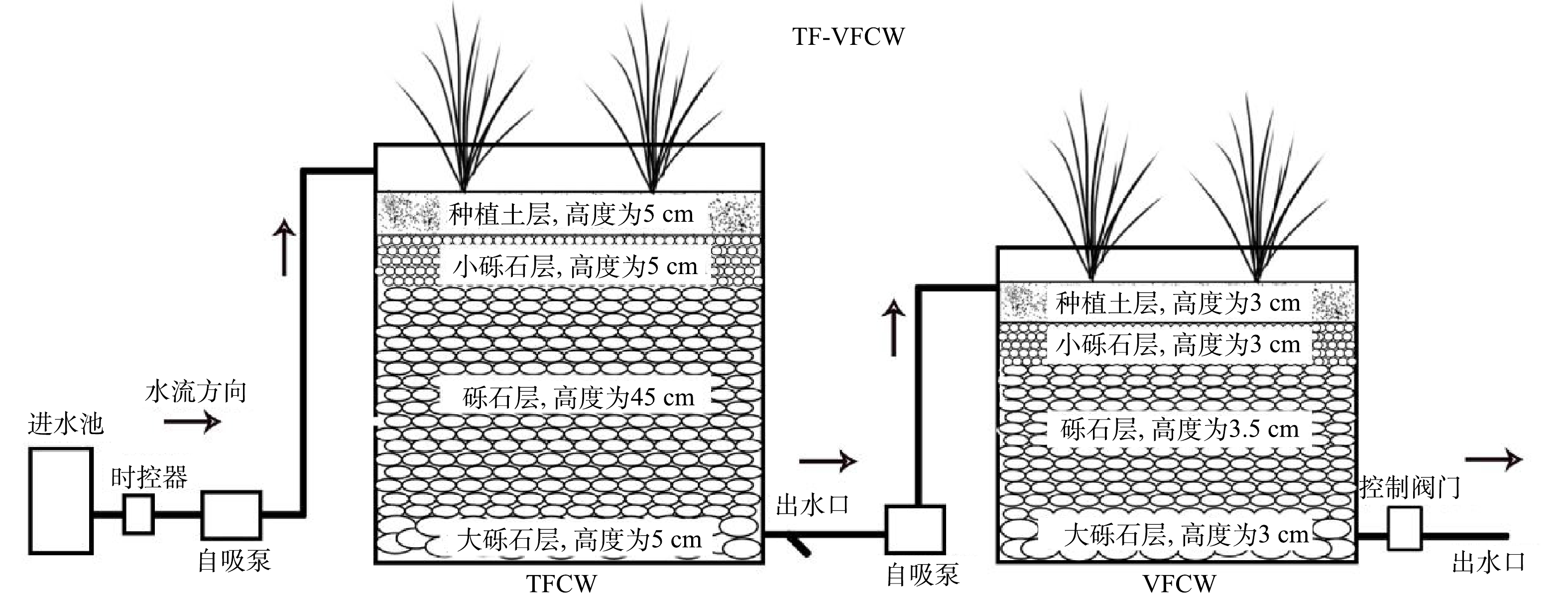
 下载:
下载:
